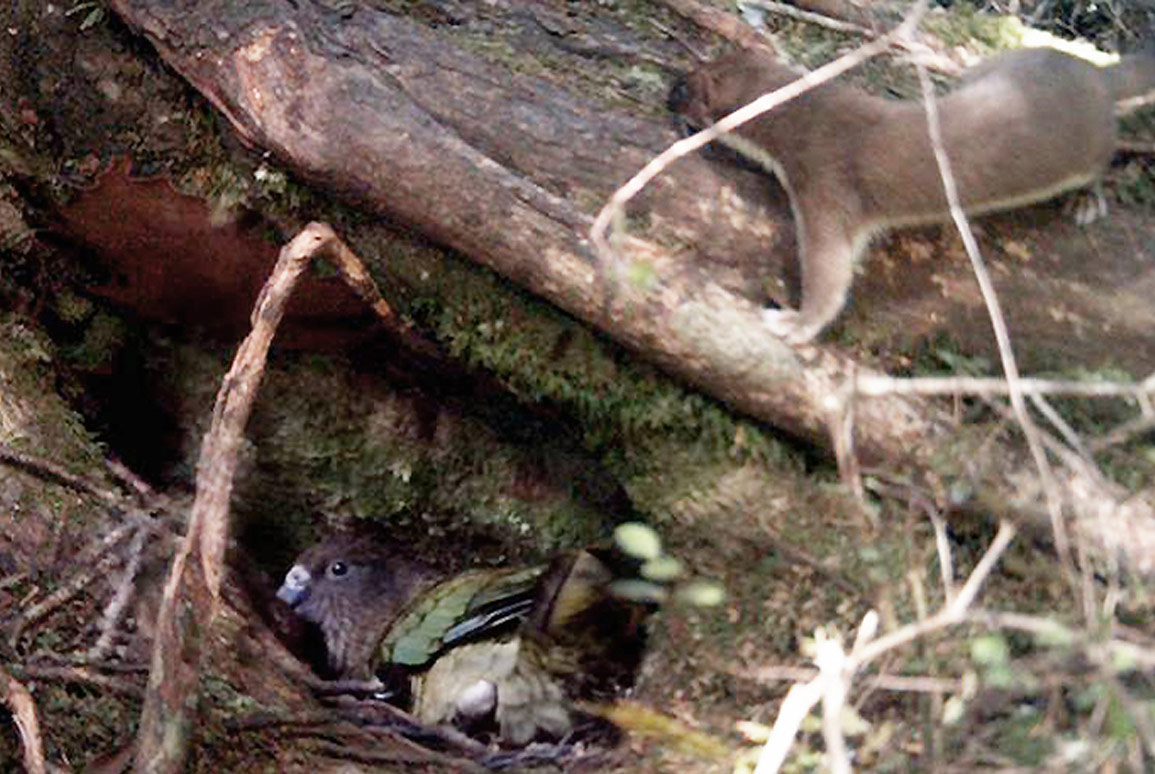Guidance on appropriate ground-based pest animal control in kea habitat
18 November 2022
Written by
The Kea Conservation Trust (KCT), DOC and biosecurity experts have developed a document outlining safe trapping practices in kea-occupied habitats.

Most New Zealanders would agree that we live in an impressive landscape filled with unique flora and fauna. As such, we can be forgiven for our determination to protect these species from the impact of accidental and purposeful introductions of predatory and browsing animals. With such sound intentions, it is often important to take stock and ensure these actions lead to the desired outcomes for all indigenous species concerned.
The Predator Free 2050 (PF2050) movement has been soldiering on for six years, with the stoic objective of ridding predators from our landscape. This will be a fierce battle with many casualties (preferably mammalian predators) and likely many failures and false starts.
Historians may look back and count the bodies of the fallen and praise the victors, hailing the ecological gains and the return of our native avian fauna. However, they may just as easily lament the loss of countless native birds caught not in the jaws of an introduced mammal, but in the deadly embrace of a cold steel trap. They may feel dismay or anger to see that some large iconic species have been driven to near-extinction through unfortunate outcomes of actions conducted with an intention to do good predator control work.
Funding has been supporting innovation within the biosecurity industry to drive better predator control practices through improvements in landscape-scale approaches, and in the design of trap and monitoring devices. A key focus is conducting predator control operations while also avoiding conflicts due to the intrinsic vulnerability of some of our ground-based endemic birds like the kiwi, kea, kaka and weka.
Kea, in particular, are genuinely inquisitive birds, actively seeking out novel and unusual objects in their environment. This curiosity poses a real (and often lethal) problem when using some types of ground- or tree-set traps. Being keen of mind and sharp of beak, kea frequently set about destroying such items, often resulting in their own demise. When food resources are plentiful, kea have even more time to pursue these destructive activities. In addition to these accidental deaths from inappropriate kill traps, poisoning from lead and human food, vehicle strikes, electrocution or drowning around townships, and consumption of aerial toxin during predator control operations contribute to a significant portion of documented kea mortalities.
While aerial toxin distribution within kea-occupied habitat is conducted under tight regulations with guidelines set by the Department of Conservation (DOC), ground-based trapping in kea habitats remains largely unregulated. Even on DOC-managed conservation land, it is possible to apply for a leg-hold trapping permit, which poses a real risk to the naturally inquisitive kea.
The Kea Conservation Trust (KCT), DOC and biosecurity experts have developed a safe-practice guidance document, which outlines safe ground-based trapping practices in kea-occupied habitats. The guidance document requires all approved traps to be assessed and graded according to their suitability for excluding non-target interaction by kea. Novel technologies, often funded by DOC or PF2050 through their commercialisation programmes, have been included in the guidance document, with a particular focus on developers taking on the responsibility of controlled testing around non-targeted species ahead of commercialisation. It is hoped that all trap manufacturers will be encouraged to carry out testing to identify risks to non-targets (such as kea), and to make adjustments and improvements to trap designs to mitigate or avoid these risks.
The solution to this issue is not only the responsibility of trap manufacturers – it's also in the hands of the end users. Community groups, contractors, trusts and agencies, and the general public must become familiar with the identified risks of each style, type, or model of trap in order to make sound judgments about where and when it is appropriate to set them within their trap network.
The Safe Practice Guidance document outlines risks and guides the user towards appropriate alternatives to high-risk devices. It is a living document, and the risk level assigned to devices can be adjusted if new safety features are developed, or further kea deaths come to light. New traps can also be added to the document as they come to the market.
Through a shared responsibility, we can care for this taonga and ensure the shrill call of the kea rings out across the mountain tops for centuries to come.
Read and download the Safe Practice Guide here



